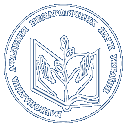- Горностай, П.П. (orcid.org/0000-0003-2327-6213) (2021) Victim trauma and aggressor trauma in intergroup conflicts Проблеми політичної психології, 10 (24). pp. 114-133. ISSN 2411-1449
|
Text
68-Текст статті-138-2-10-20220209.pdf Download (277kB) |
Abstract
Relevance. Collective trauma is a crucial socio-psychological phenomenon that affects the social life of large and global groups of people, sometimes determining even the success or failure of the essential life tasks of the community. Purpose. The article is devoted to studying conflicting intergroup interaction, which leads to the psychological trauma of all its participants. Methodology. Theoretical analysis of literary sources. Results. The study found that the interaction can be symmetrical when participants alternately or simultaneously act as victims and aggressors; asymmetric when the positions of victim groups and aggressor groups are clearly defined; and mixed when symmetry and asymmetry alternate at different historical stages. Examples of symmetrical intergroup conflicts are wars. These injuries have the property of cyclicity, i.e., historical recurrence. Examples of asymmetric intergroup conflict interaction are genocide, slavery, and collective deportation. Social phenomena such as serfdom and concentration camps, which can also be attributed to collective trauma, show indications of the trauma of slavery. Conflict intergroup interaction traumatizes all its participants: victims, aggressors, and accomplices – a specific group of people standing between the first two, former victims who joined the aggressors. Evidence that the aggressor is traumatized is many negative feelings that the aggressor is experiencing, which may be a sign of injury. The aggressor group’s prevalence of post-traumatic stress disorder, which is an objective sign of collective trauma, is relatively high. In some conditions, it can be much higher than in victim groups. The accomplice group is also a carrier of collective trauma for several generations, evidenced by the Holodomor genocide. Some socio-psychological characteristics of groups involved in intergroup interaction contribute to conflict and trauma: group aggressivity, group victimhood, group inferiority complex. There are also individual psychological factors that allow aggression and trauma. One of the mechanisms of cyclicity collective traumas and their transformation into historical traumas is the intergenerational transmission of traumatic experience. Conclusions. Practices of healing the consequences of historical traumas should be aimed at all participants in conflicting intergroup interactions.
| Item Type: | Article |
|---|---|
| Keywords: | collective trauma; historical trauma; conflict intergroup interaction; symmetric intergroup conflicts; asymmetric intergroup conflicts; victim trauma; aggressor trauma. |
| Subjects: | Science and knowledge. Organization. Computer science. Information. Documentation. Librarianship. Institutions. Publications > 1 Philosophy. Psychology Science and knowledge. Organization. Computer science. Information. Documentation. Librarianship. Institutions. Publications > 3 Social Sciences > 314/316 Society > 316 Соціологія |
| Divisions: | The Institute of Social and Political Psychology > Laboratory for Psychology of Small Groups and Inter-Group Relations |
| Depositing User: | Професор Павло Петрович Горностай |
| Date Deposited: | 05 Apr 2023 14:38 |
| Last Modified: | 05 Apr 2023 14:38 |
| URI: | https://lib.iitta.gov.ua/id/eprint/734718 |
Downloads
Downloads per month over past year
Actions (login required)
 |
View Item |




